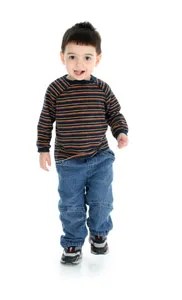The idea of good posture conjures up a fairly universal image — shoulders back, chin forward and spine straight as an arrow. However, this isn’t the whole, or only picture.
Posture is not a static condition, primarily because the spine is designed to be flexible. The unique “stacked” configuration of the spine allows for movement in several directions. If the spine were rigid or inflexible, it would prevent us from turning, bending or reaching.
The spinal column is made up of 33 bones, or vertebrae, stacked one on top of the other. Between each of the top 24 bones is a spongy piece of cartilage known as a disk. Three of these areas — the cervical (neck), thoracic (chest) and lumbar (lower back) — have a curve to them.
In normal upright posture, there is forward curvature in the neck, backward curvature in the chest, and forward curvature in the lower back. Good posture consists of keeping these three natural curves in balance while standing, sitting or lying down. A person’s ears, shoulders, hips, knees and ankles should be aligned, with the shoulders relaxed and the knees slightly bent.
 There are health risks associated with bad posture. People with poor posture are predisposed to lower back pain problems. There are several causes of bad posture, including disk problems, spinal defects or, more rarely, tumors. Poor posture may also result from weakness in the abdominal and back muscles responsible for supporting the area surrounding the lower portion of the spine.
There are health risks associated with bad posture. People with poor posture are predisposed to lower back pain problems. There are several causes of bad posture, including disk problems, spinal defects or, more rarely, tumors. Poor posture may also result from weakness in the abdominal and back muscles responsible for supporting the area surrounding the lower portion of the spine.
Weak abdominal muscles allow the pelvis to tilt forward, resulting in forward curvature in the lumbar region and a backward curvature in the thoracic region. This exaggerated curvature may aggravate an existing condition or be the initial cause of a lower back problem. When abdominal muscles are strong, the exaggerated curvature and resulting strain is prevented. Done properly, exercises such as sit-ups, stomach crunches, and leg lifts can strengthen abdominal muscles enough to prevent many posture-related problems.
In addition to weakness in the musculature surrounding the abdomen and spine, there are two common spinal defects which can lead to poor posture: spondylolithesis and scoliosis.
Spondylolithesis is a spontaneous forward or backward displacement or a lumbar vertebra. It occurs when a vertebra consists of soft, fibrous tissue instead of normal bone. As a result, the arch is weaker than normal and more likely to be deformed or damaged under stress. This defect may be congenital or may have developed as a result of osteoarthritis or rheumatoid arthritis.
Scoliosis, more commonly called “curvature of the spine”, is a deformity in which the spine is bent to one side. As the condition progresses, the vertebrae curve left or right, crowding together the ribs on that side of the body and pulling ribs apart on the opposite side. Treatment, when appropriate, may consist of exercise, bracing and/or surgery to fuse together certain vertebrae.





















